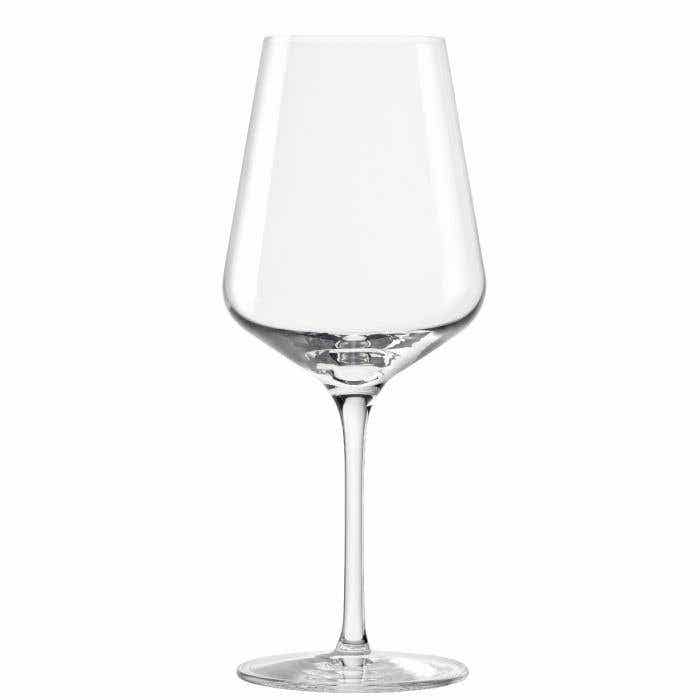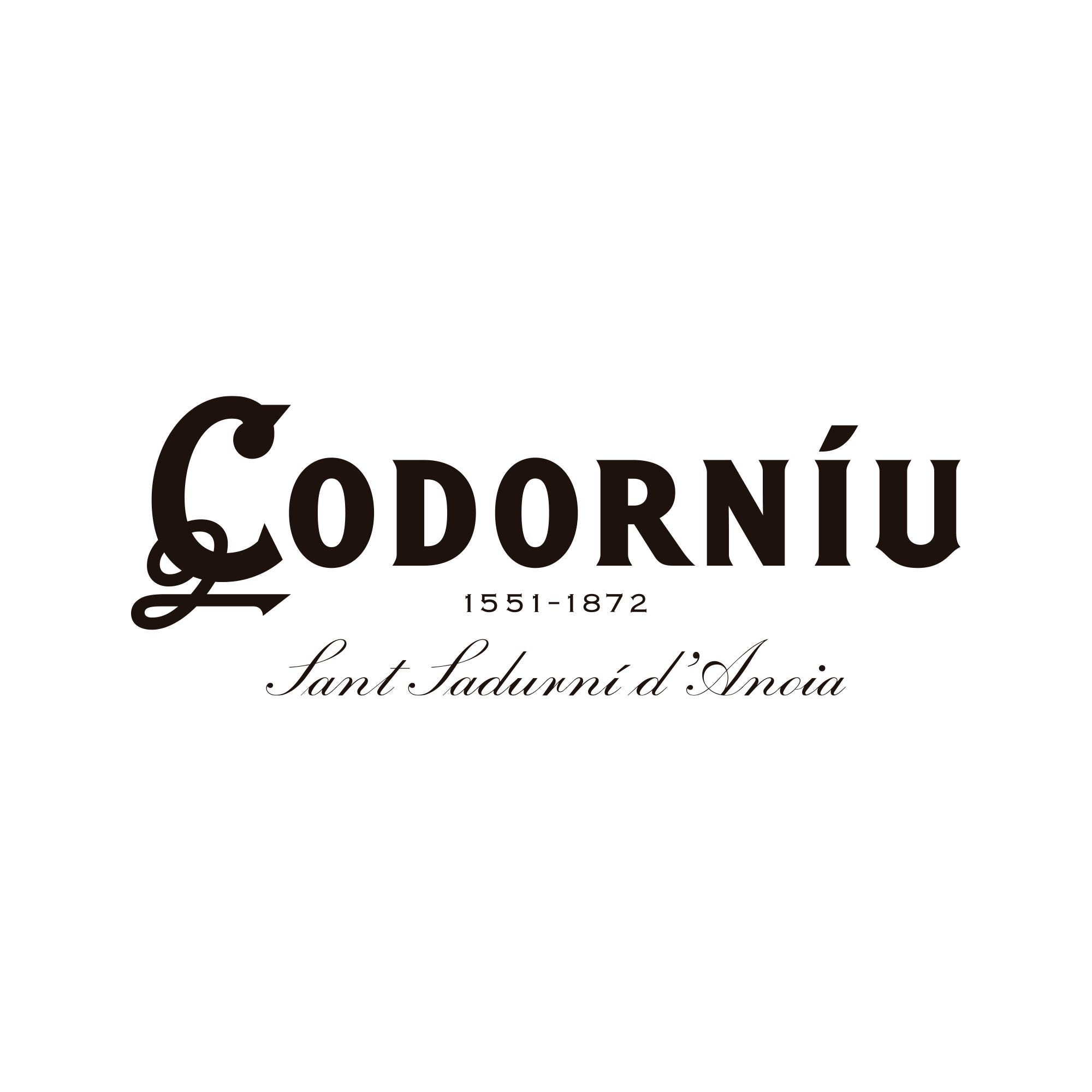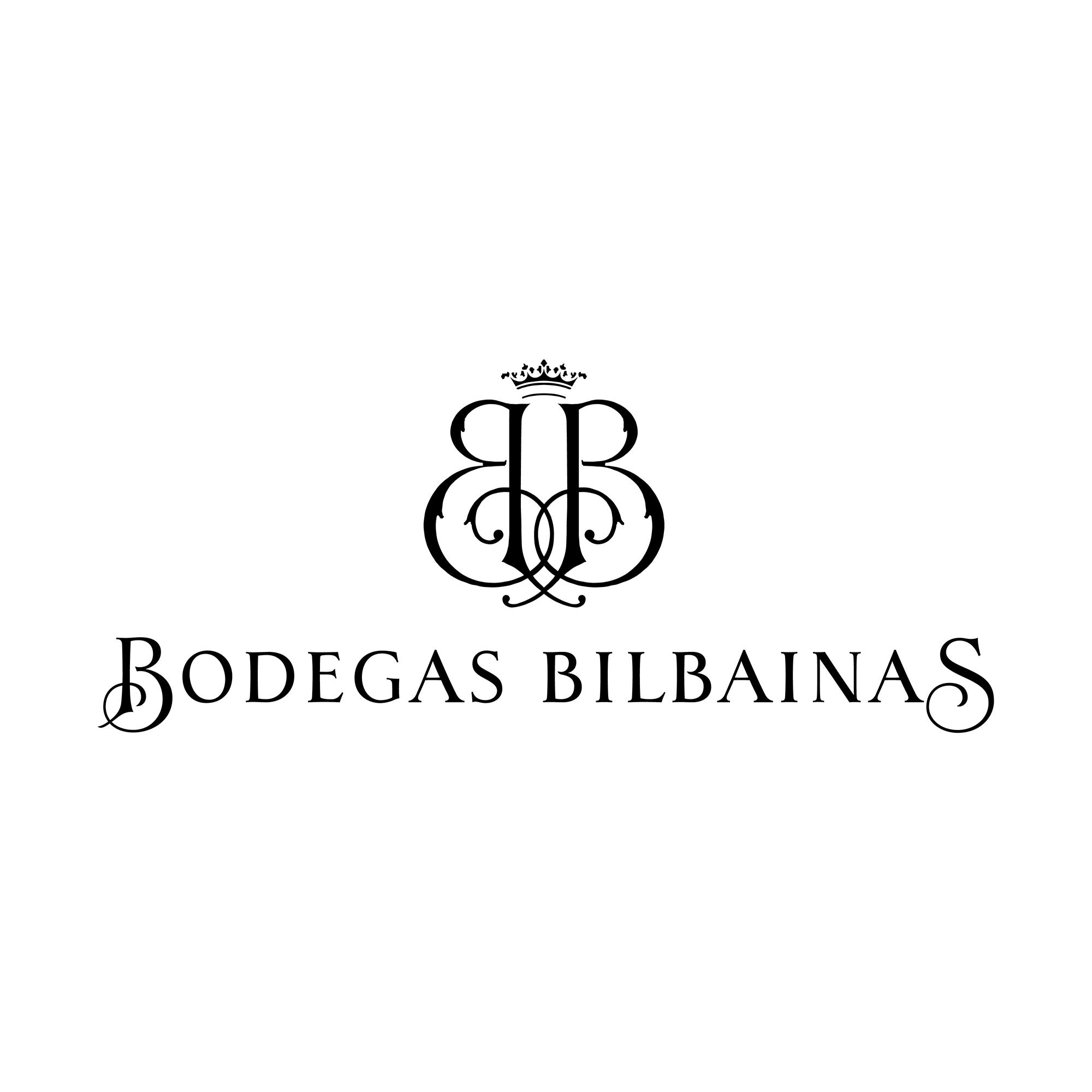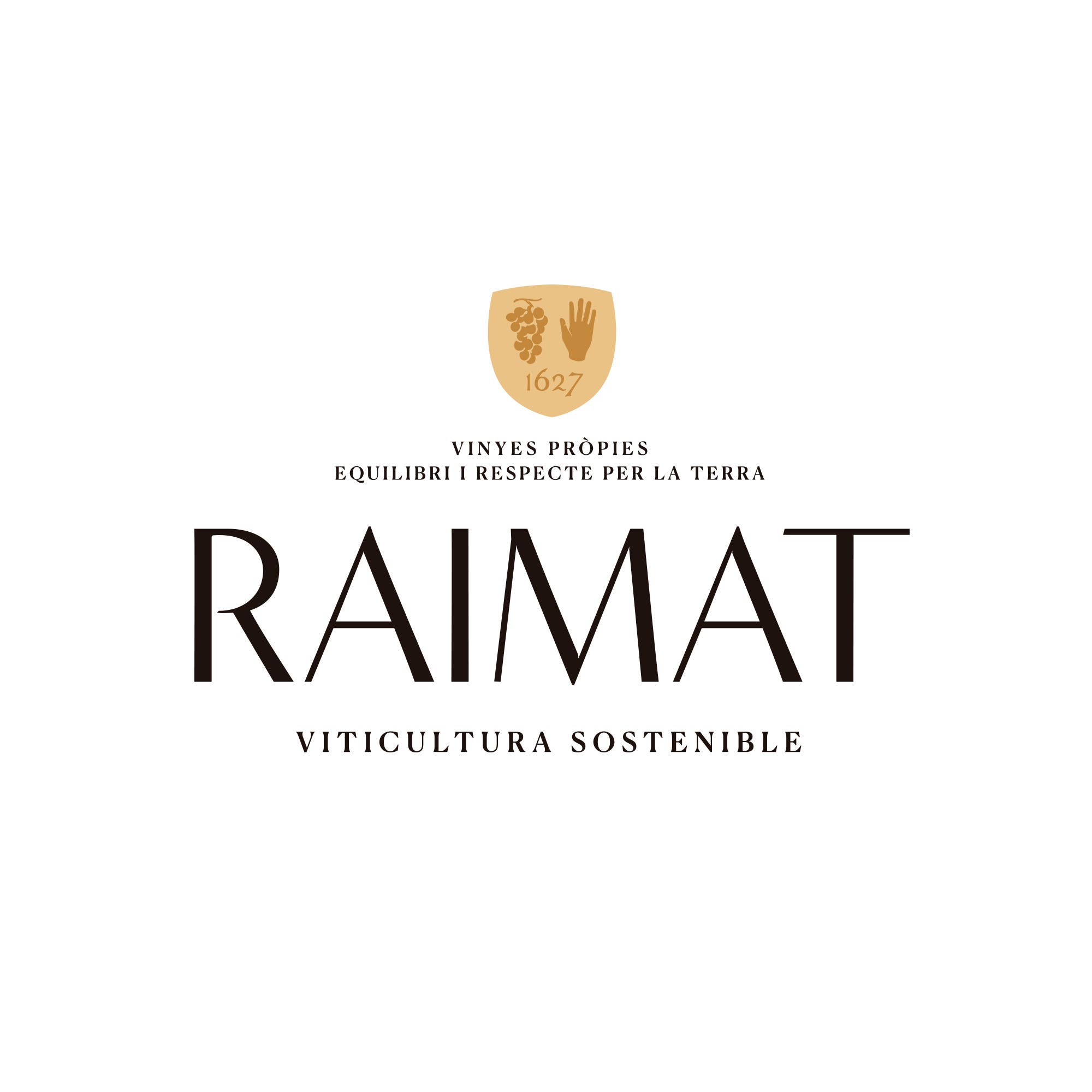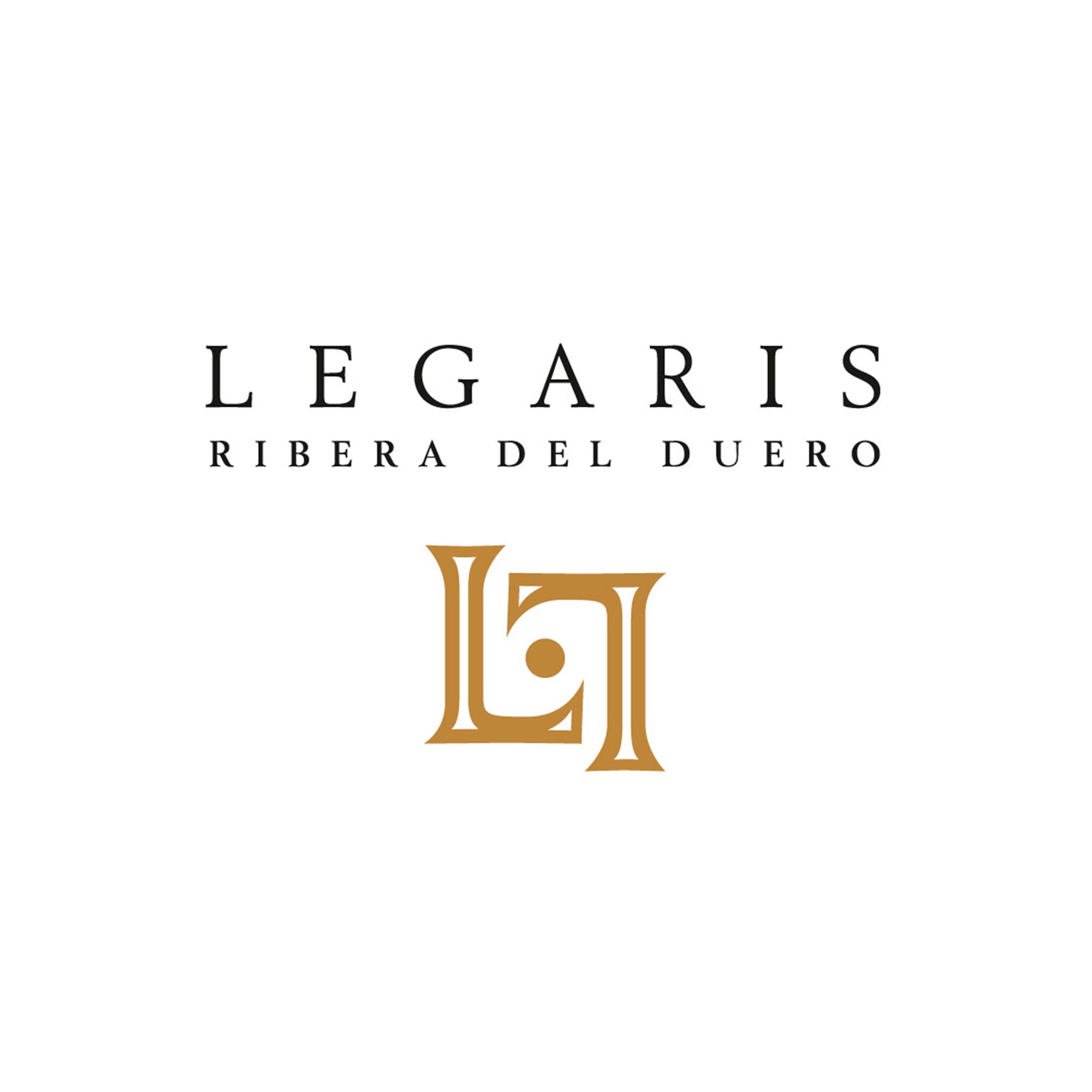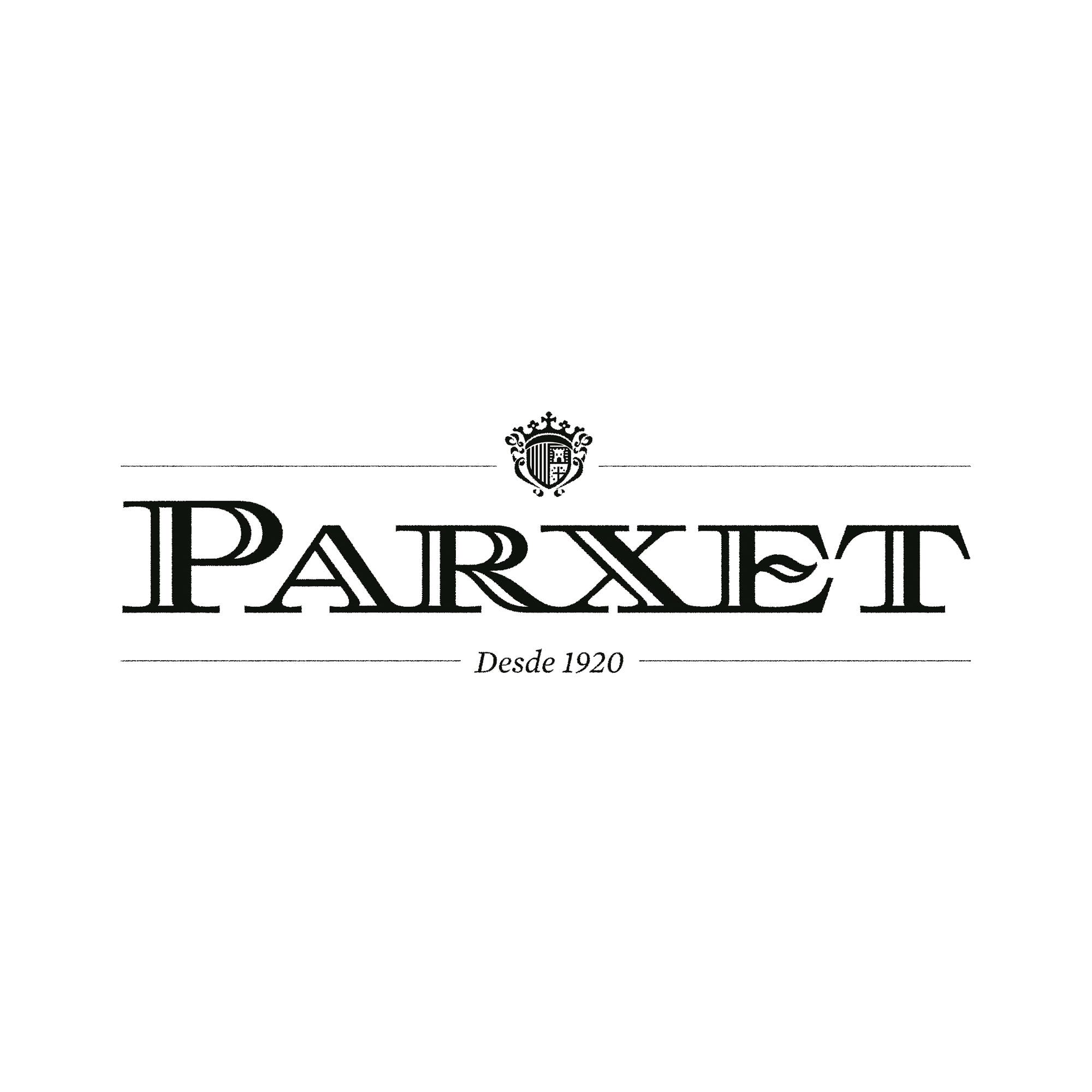Bodegas Bilbaínas
Founded in 1901 in Haro's iconic Station Quarter, Bodegas Bilbaínas is the longest-standing bottling winery in Rioja. Viña Pomal is the winery's most iconic brand and its first vintage was released in 1904, the starting point on its journey to becoming a classic.
You can visit our hundred-year old winery with historic buildings and one of the largest underground cellars in La Rioja (3,400m²), built at the end of the 19th century.
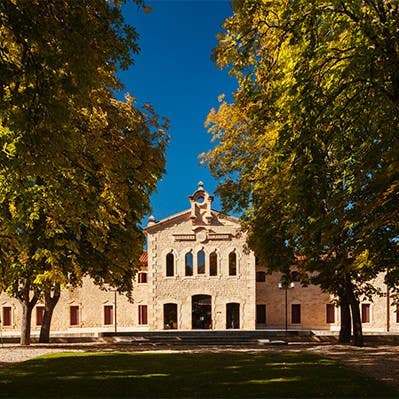

Rioja
Designation of Origin
250 hectares
Area of vineyland
History
Bodegas Bilbaínas has more vineyards (250 ha) than any other winery in Haro, the most important area of the Rioja Alta. It is also one of the few château estates with more than 130ha of vineyards surrounding the winery.
It also has the most extensive underground cellars in the region and a greater area of vineyards than any other winery in Haro. In total it owns 250 hectares of high quality vines, which supply the winery with its own grapes, ensuring that they can be processed quickly without losing their qualities. Bodegas Bilbaínas defines itself as a classically styled winery, making Reservas and Gran Reservas, and a good example of this is its flagship brand, Viña Pomal, followed by its other iconic brands: La Vicalanda and Ederra. In addition, the winery has a close relationship with quality sparkling wines that goes back to its origins at the start of the 20th Century, with brands that include Royal Carlton and Lumen.
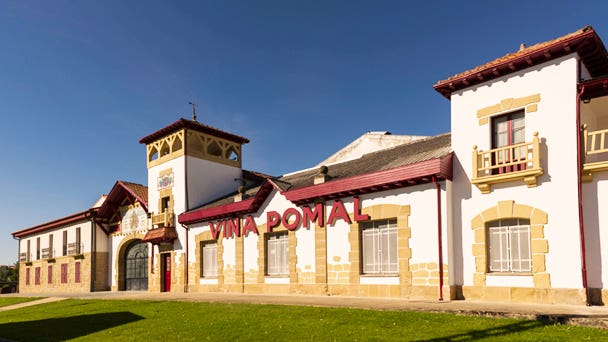

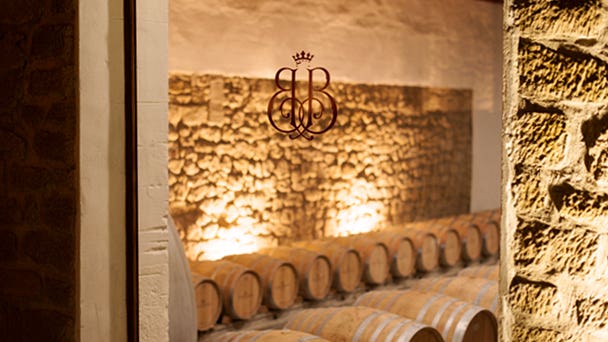

Viña Pomal wines are faithful to the classic style of authentic Rioja. The excellent characteristics of the vineyards that belong to the winery, the careful selection of the grapes, and the painstaking process of ageing in American oak Bordeaux barrels gives Viña Pomal a unique style that marks it out as a flagship Rioja wine.
Our winery goes back to 1859, when the French producers Savignon Frères & Cie. established themselves in Haro, in the Station Quarter, to escape from the phylloxera that affected the French vineyards. They then started to produce and export red wine to France. In 1901, a group of businessmen from Bilbao acquired the winery and created Bodegas Bilbaínas.
The construction of the winery was completed in 1904, with the first harvest of Viña Pomal taking place the same year. In parallel, Castle Pomal was also created, destined for the British market, revealing the importance that the international market has always had for the winery. The first bottle of Viña Pomal was released in 1901, a wine conceived by Santiago de Ugarte Aurrecoechea, co-founder of Bodegas Bilbaínas and the society's first General Director.
In 1925, Bodegas Bilbaínas became part of the Rioja Qualified Designation of Origin, the longest-standing and most prestigious DO in Spain.
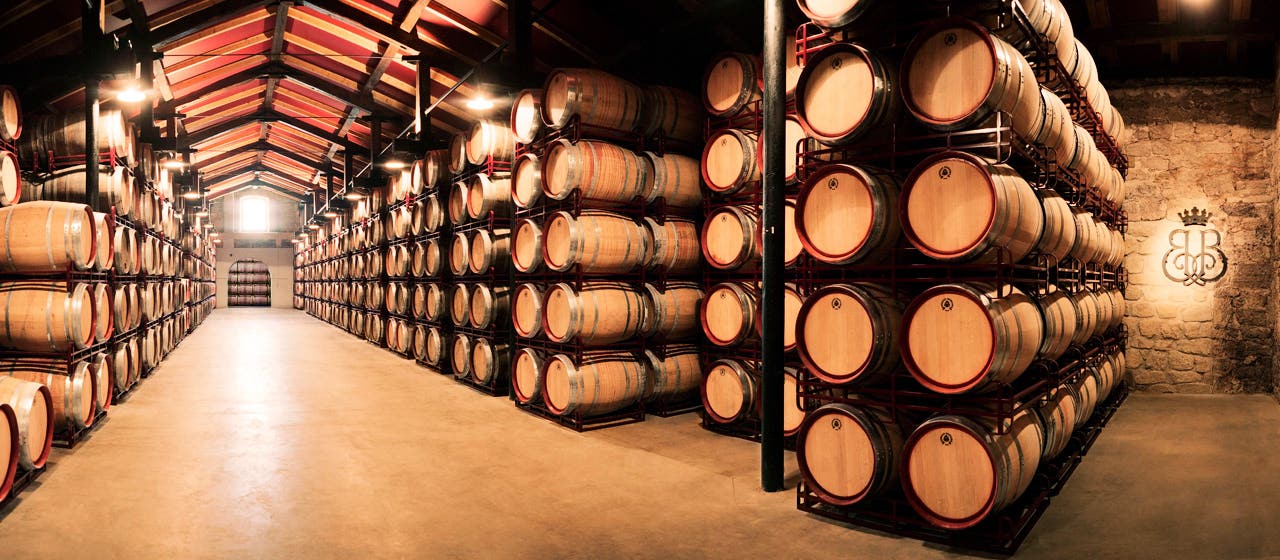

Bodegas Bilbaínas can be defined by the entrepreneurial spirit with which the winery was founded, and is focus on the vineyards. The wines have been made from the estate's own vines and bottled on the property from the outset. This is how the winery controls the quality of the whole process from the vineyard to the wine that is served on your table.
The Bilbaínas winemakers have always cultivated this spirit of innovation, constantly renewing the vineyard and introducing new and ever more sustainable growing techniques. The winery was a pioneer in La Rioja in the launch of new modern or high expression wines with La Vicalanda and later, with the wine Alto de la Caseta.
In addition, Bilbaínas was the first winery in Haro to obtain Viñedo Singular certification and to produce Vinos Singulares from these vines.
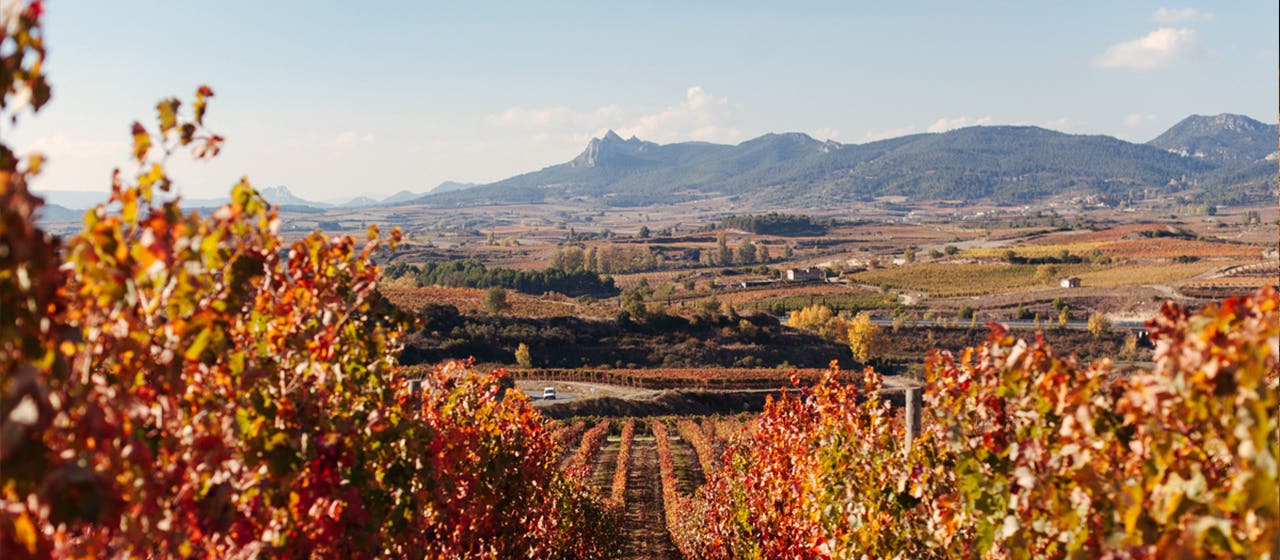

Wine tourism
Discover how Viña Pomal is made: learn to blind taste, enjoy our activities in the middle of the vineyard, discover our food and wine pairing suggestions in our wine bar and terrace, come with your children ... Can you think of a better way to enjoy the world of wine and nature?
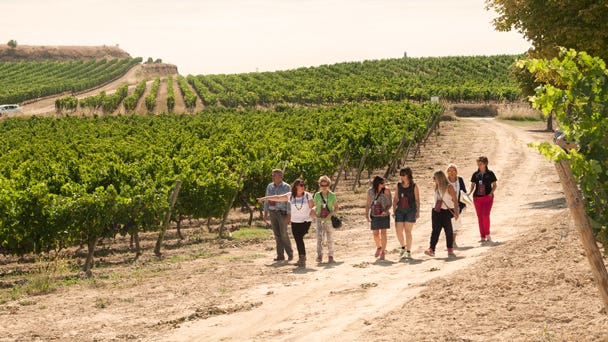

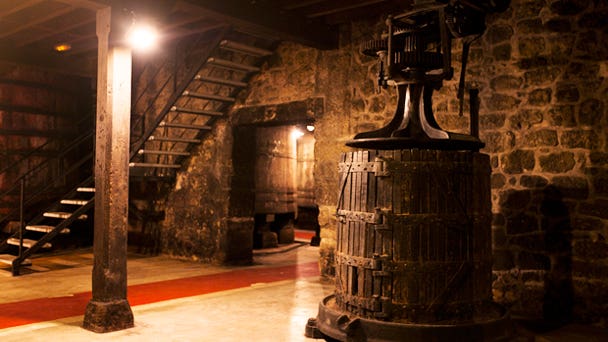

Open 365 days.
Mayte Calvo de la Banda
Winemaker and Director of Bodegas Bilbaínas
She arrived at Bodegas Bilbaínas in 2019, accepting the challenge of maintaining the historic legacy of its brands and continuing to make great wines that are in keeping with its imposing vineyards and wineries in the town of Haro. According to Mayte, "The wine should be understood from the vineyard, knowing how to interpret every variety, each plot and how to maximise everything that natures gives us."
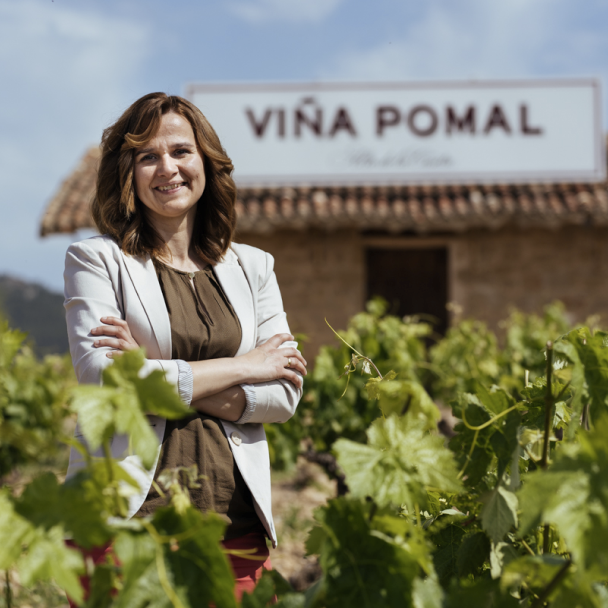

The vineyards
Owners of the most extensive vineyards in Haro.
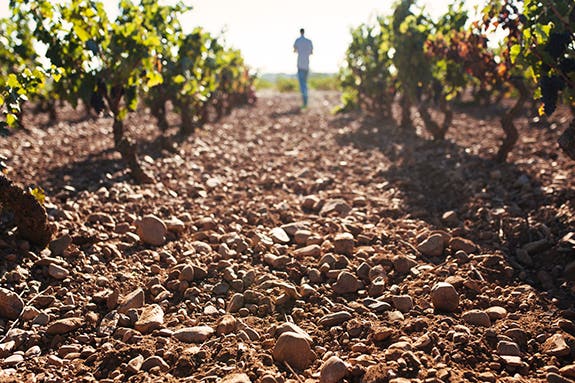

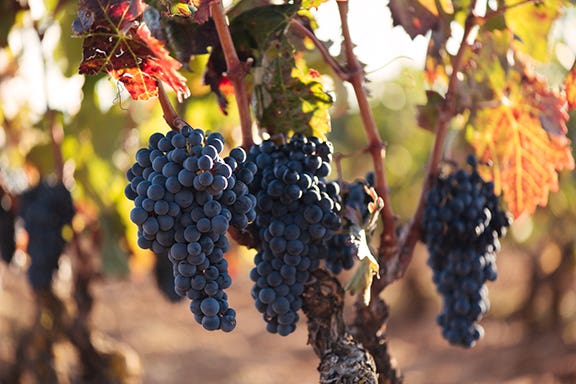

Zaco
14 hectares
Area of vineyard
This estate is 14 hectares in size, located on a hill overlooking a meander of the Ebro River.
Vineyard characteristics:
Deep sandy soils with surface pebbles that are alluvial in origin.
Soils
448 metres
Altitude
Bush
Training
Tempranillo
Variety
2,000 kg/Ha
- Yield
35 years
Average age of vines
The grapes have a unique profile due to the influence of the soil on the meander, which results in wines that are rounded, profound and dense in flavour.
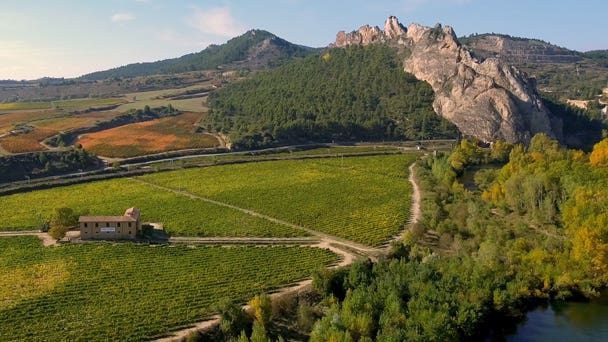

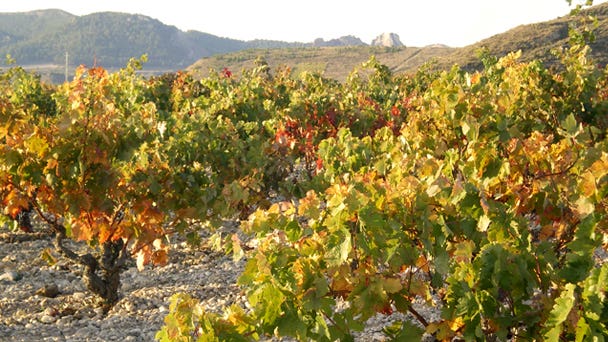

Paceta
47 hectares
Area of vineyard
With a total of 47 hectares of vineyard, the Paceta estate provides us with fine, fresh wines due to the soil type. It is bordered by the River Ebro and the railway line.
Vineyard characteristics:
Sandy clay loam
Soils
445 metres
Altitude
Wire-trained
Training
Viura, Malvasía, Maturana Blanca and Tempranillo
Varieties
5,000 kg/Ha (Viura, Malvasía and Tempranillo)
2,500 kg/Ha (Maturana blanca)
Yield
20 years
Average age of vines
The “Conchas de Haro” gorge provides natural protection for this iconic area of vineyards, dominated by both sides by the Obarenes mountains, which impede the progress of the damp climate to the north.
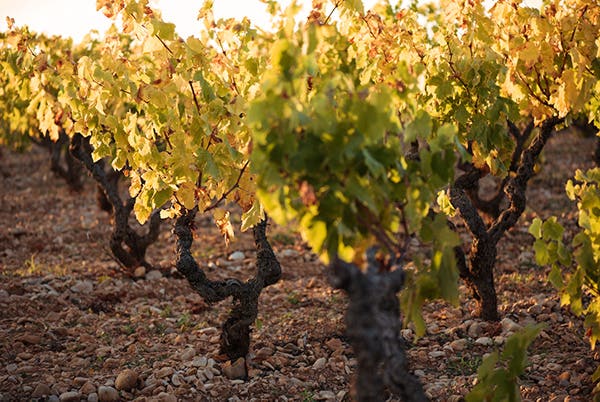

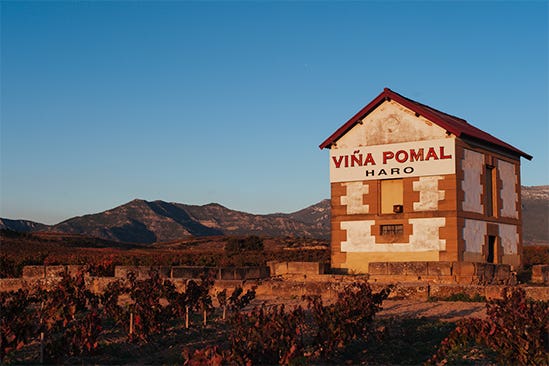

Vicuana
12 hectares
Area of vineyard
A Roman bridge that crosses the Ebro River connects Vicuana with the neighboring Zaco estate. Its Roman origins are also reflected in the remains of a settlement, in the form of tombs and lagares.
Vineyard characteristics:
Silt loam
Soil
445 metres
Altitude
Bush
Training
Tempranillo and Graciano
Varieties
2,500 kg/Ha
Yield
30 years
Average age of vines
The upper part of the slope, with a limestone component to the soil, is harvested before the lower part, which is more clay-based. The higher part is of Graciano and the lower Tempranillo, maintaining the structure of the original and classic Rioja plantation.
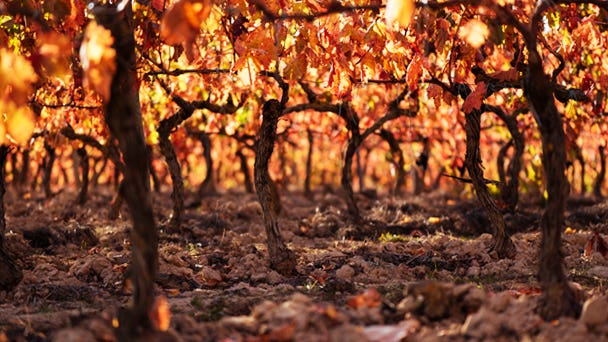

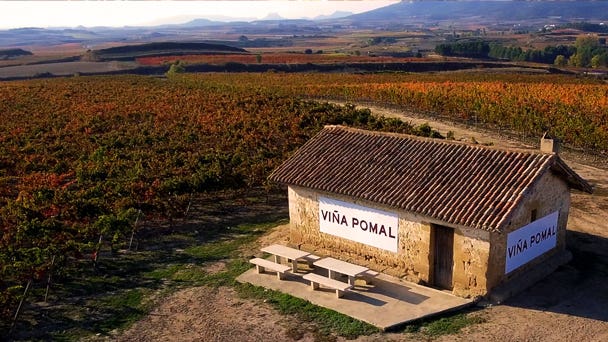

Viña Pomal Cuervo and Cores
69 hectares
Area of vineyard
Both estates add up to a total of 69 hectares of low-yielding vines. The slow ripening of Tempranillo on these soils brings elegance, balance and subtlety.
Vineyard characteristics:
Calcareous clay
Soils
440 metres
Altitude
Wire-trained (95%) and bush vines (5%)
Training
Tempranillo, Tempranillo blanco and Garnacha blanca
Varieties
5,500 kg/Ha
Yield
28 years
Average age of vines
Intregrated into a sustainable development project (wild plant cover, dry-farmed, bird of prey colony) it is one of the largest vineyards in Rioja, surrounding the winery in a French château concept.

